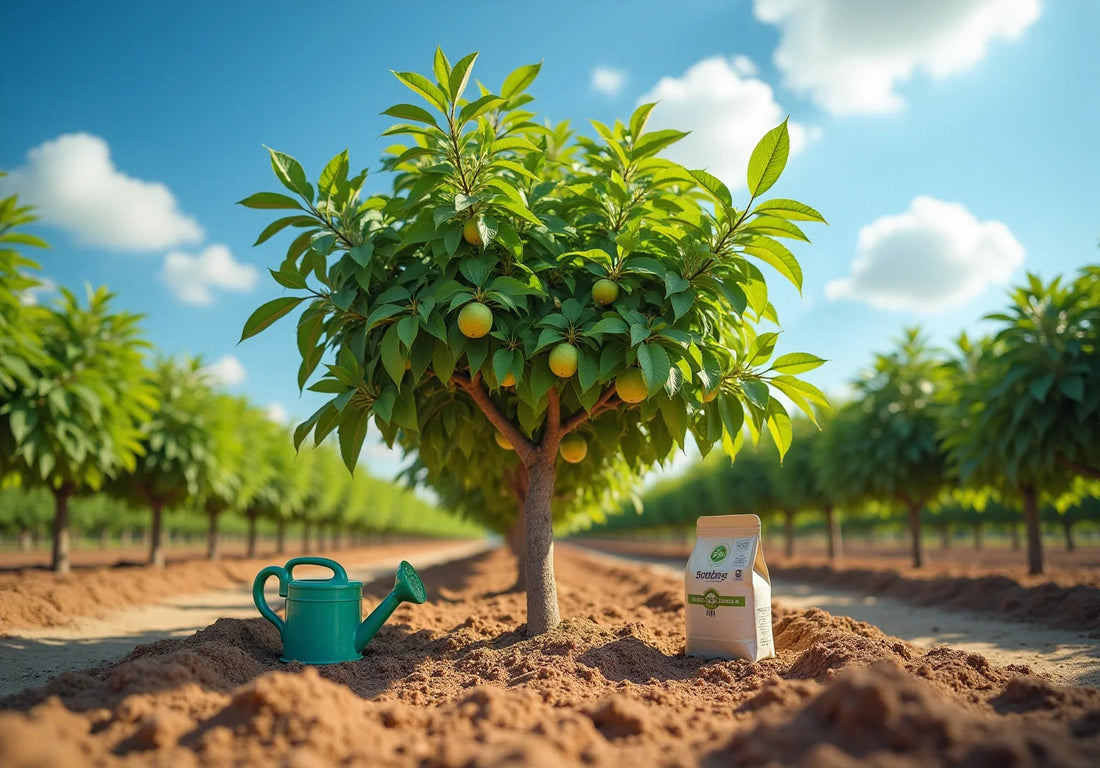
5 Steps to Successfully Grow Star Fruit in Your Garden
Share
Cultivating star fruit can transform a garden into a tropical paradise. However, successful growth hinges on understanding specific environmental needs. This guide explores essential techniques for nurturing star fruit trees, covering everything from selecting the ideal planting site to maintaining optimal care. What occurs when conditions aren't just right or when pests threaten the harvest? Addressing these challenges not only enhances gardening skills but also ensures a bountiful yield of this exotic fruit.
Want to grow Star Fruit in your garden?
Explore Star Fruit Collection at Everglades Farm - shipped directly from Florida?
1. Understand Star Fruit Growing Conditions
Star plants flourish in warm, tropical to subtropical climates, particularly within USDA hardiness zones 10 to 11. They require full sun exposure, thriving best with at least 8 hours of direct sunlight each day for optimal growth. The ideal temperature range for star produce is between 68°F and 95°F, and elevated humidity levels further enhance their growth.
It is crucial to protect these plants from frost, as temperatures dropping below 60°F can hinder growth and negatively impact crop production. When selecting a planting location, choose an area sheltered from strong winds, which can damage the delicate branches and flowers of the tree.
As horticulturists emphasize, meeting these conditions is essential for successful star fruit cultivation.
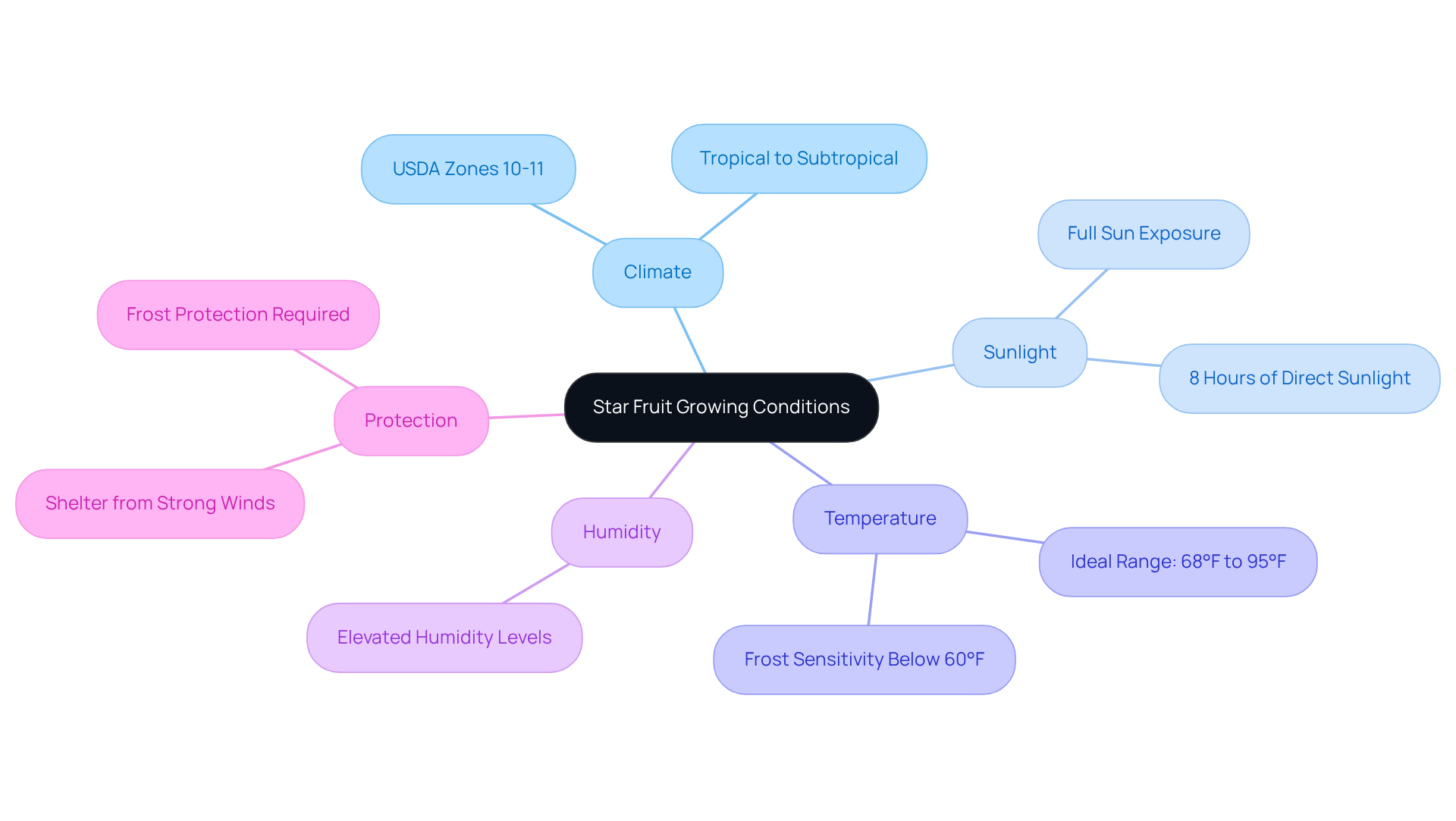
2. Prepare Soil and Select Planting Site
To successfully cultivate the fruit known as star fruit, it is essential to start by selecting well-draining soil that is slightly acidic to neutral, ideally with a pH between 5.5 and 6.5. Sandy loam or loamy soil enriched with organic matter is particularly suitable for growing star fruit plants.
Before planting star fruit, amend the soil with compost or well-rotted manure to boost fertility and drainage, both of which are crucial for healthy growth.
Choose a planting location for star fruit that receives full sunlight for at least 6-8 hours each day, ensuring it is free from nearby vegetation or structures that may cast shade. Proper air circulation is vital for the growth of star fruit, as it helps prevent fungal infections, while protection from strong winds is also important for the safety of young plants.
For container planting of star fruit, choose pots with drainage holes and fill them with a high-quality potting mix designed for tropical plants, ensuring optimal conditions for root development and moisture retention.
Regular monitoring of soil pH is critical, as incorrect levels can lead to stunted growth of crops, including star fruit, as well as nutrient deficiencies and insufficient production.
By utilizing Everglades Farm's professional-grade fertilizers and exploring the Fast-Growing Trees collection, you can significantly enhance your gardening success and enjoy a bountiful harvest.
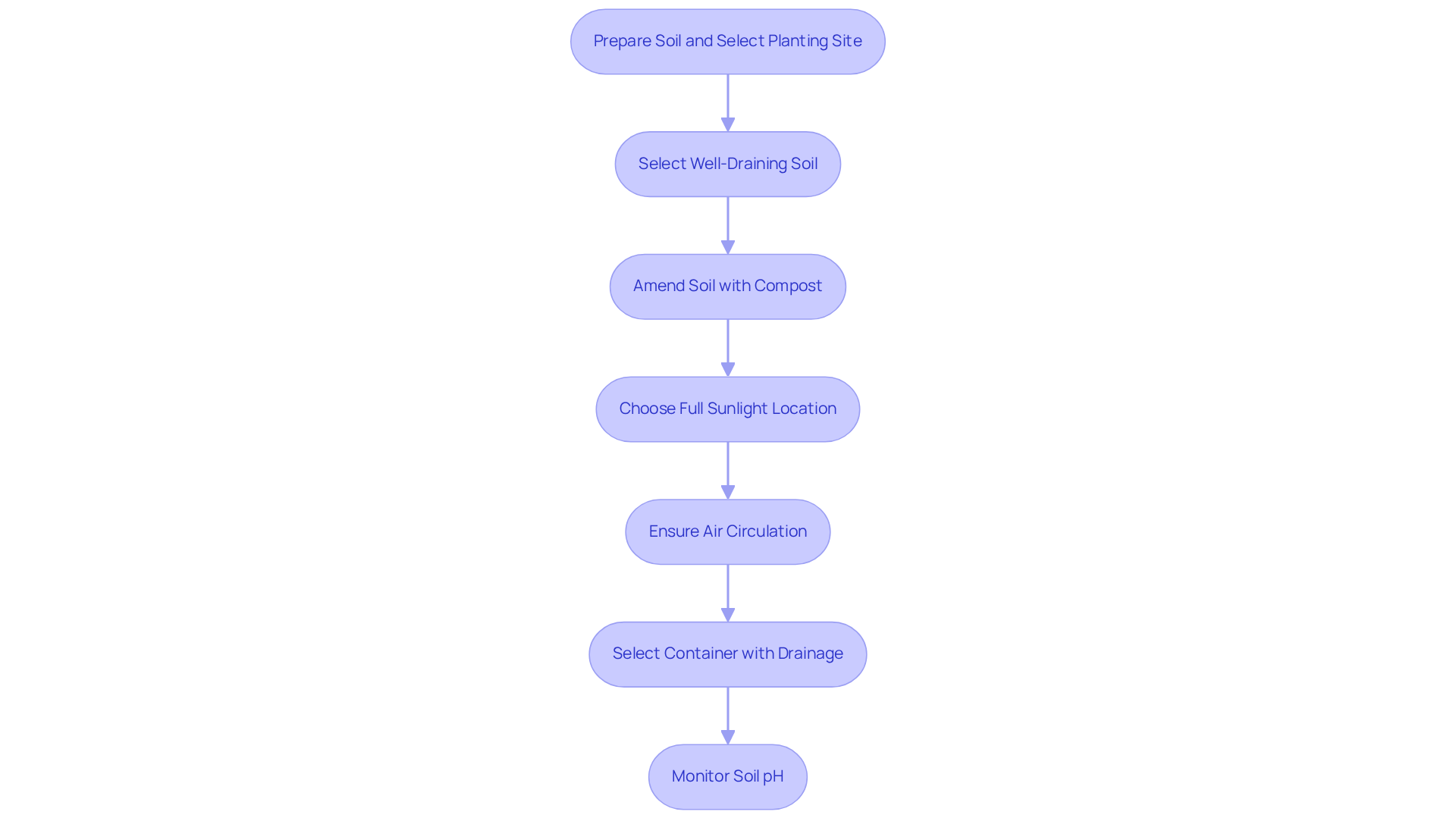
3. Plant Star Fruit Trees
To successfully plant a star fruit, begin by digging a hole that is twice as wide and deep as the root ball. This approach ensures that the roots have ample space to expand, which is crucial for the plant's growth. Gently remove the plant from its container, taking care to minimize disturbance to the roots. Position the sapling in the center of the hole, ensuring that the upper part of the root ball is level with the surrounding soil. Refill the hole with earth, compacting it gently around the roots to eliminate any air pockets. After planting, water the plant thoroughly to help settle the soil, as this is essential for establishing a healthy root system.
It's important to maintain consistent moisture without waterlogging the roots, which can lead to root rot. When planting multiple star fruit plants, it is important to ensure they are spaced at least 20 to 30 feet apart to accommodate their mature size, since these star fruit plants can grow quite large. According to horticultural specialists, proper planting depth is vital for the plant's health, facilitating effective establishment of the root system.
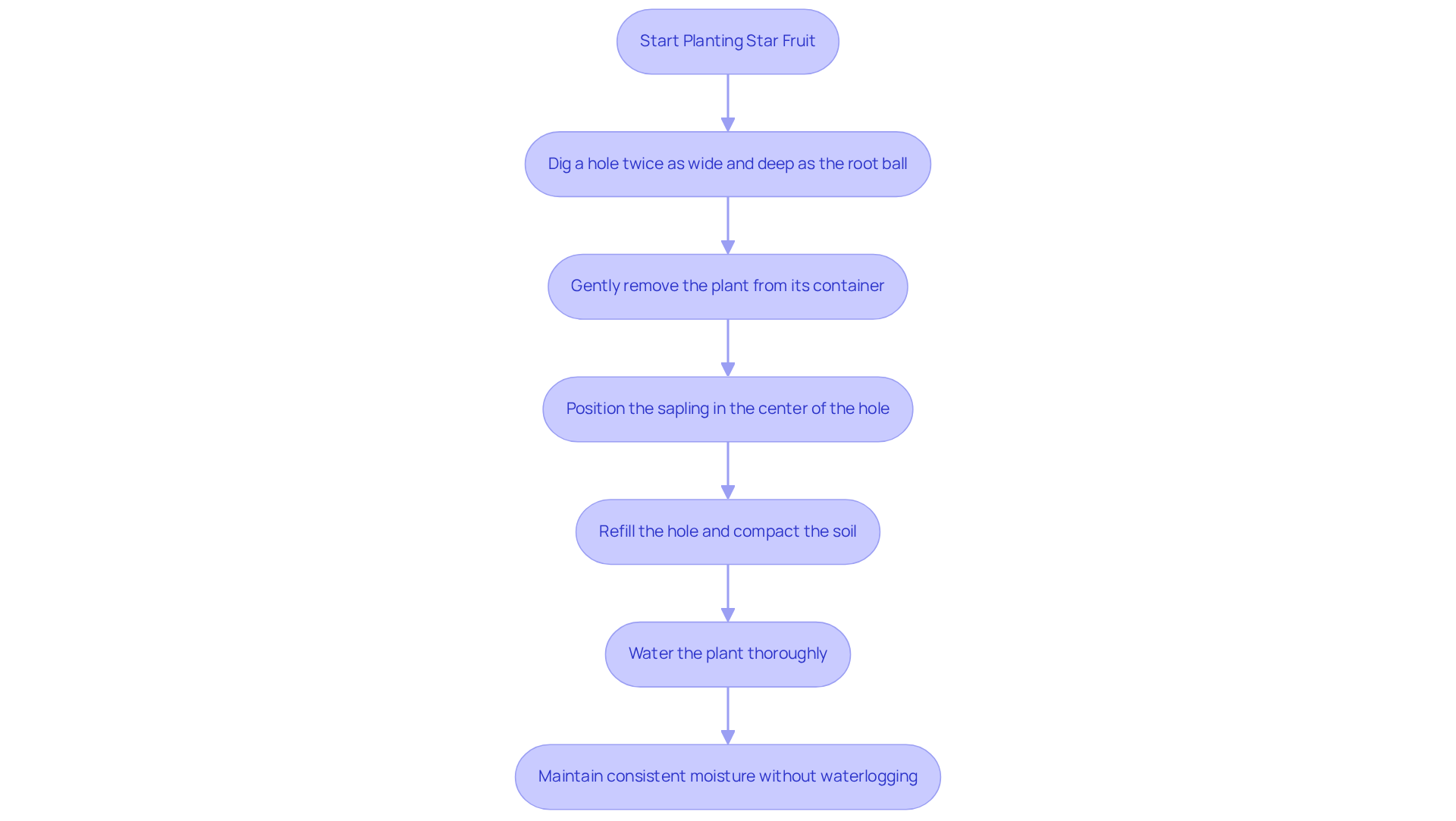
4. Maintain and Care for Your Star Fruit Trees
Star fruit plants thrive with consistent care, especially regarding watering and fertilization. During dry spells, it is essential to water deeply once a week, allowing the soil to dry slightly between waterings to prevent root rot. For optimal growth, fertilize the plant every 4 to 6 weeks during the growing season with a balanced fertilizer, applying ¼ to ½ pound of mixed fertilizer as recommended by experts. Young plants benefit from more frequent fertilization, approximately every 30 to 60 days, to support their rapid growth.
Pruning is another crucial practice; it should be performed annually to maintain the plant's shape and remove any dead or unhealthy branches. This encourages healthy growth and improves air circulation. Additionally, regular monitoring for pests such as aphids and scale insects is vital. If infestations occur, they should be addressed promptly with organic insecticides or neem oil to protect the plant's health. For those also cultivating soursop, implementing similar pest management strategies is important, as both plants can be vulnerable to pests.
Effective fertilization strategies indicate that star fruit plants, known scientifically as Averrhoa carambola, respond positively to nutrient management techniques, including soil and leaf analysis to tailor fertilization to specific needs. By adhering to these care guidelines and incorporating best practices for planting soursop, gardeners can ensure vigorous growth and productive yields from their tropical plants.
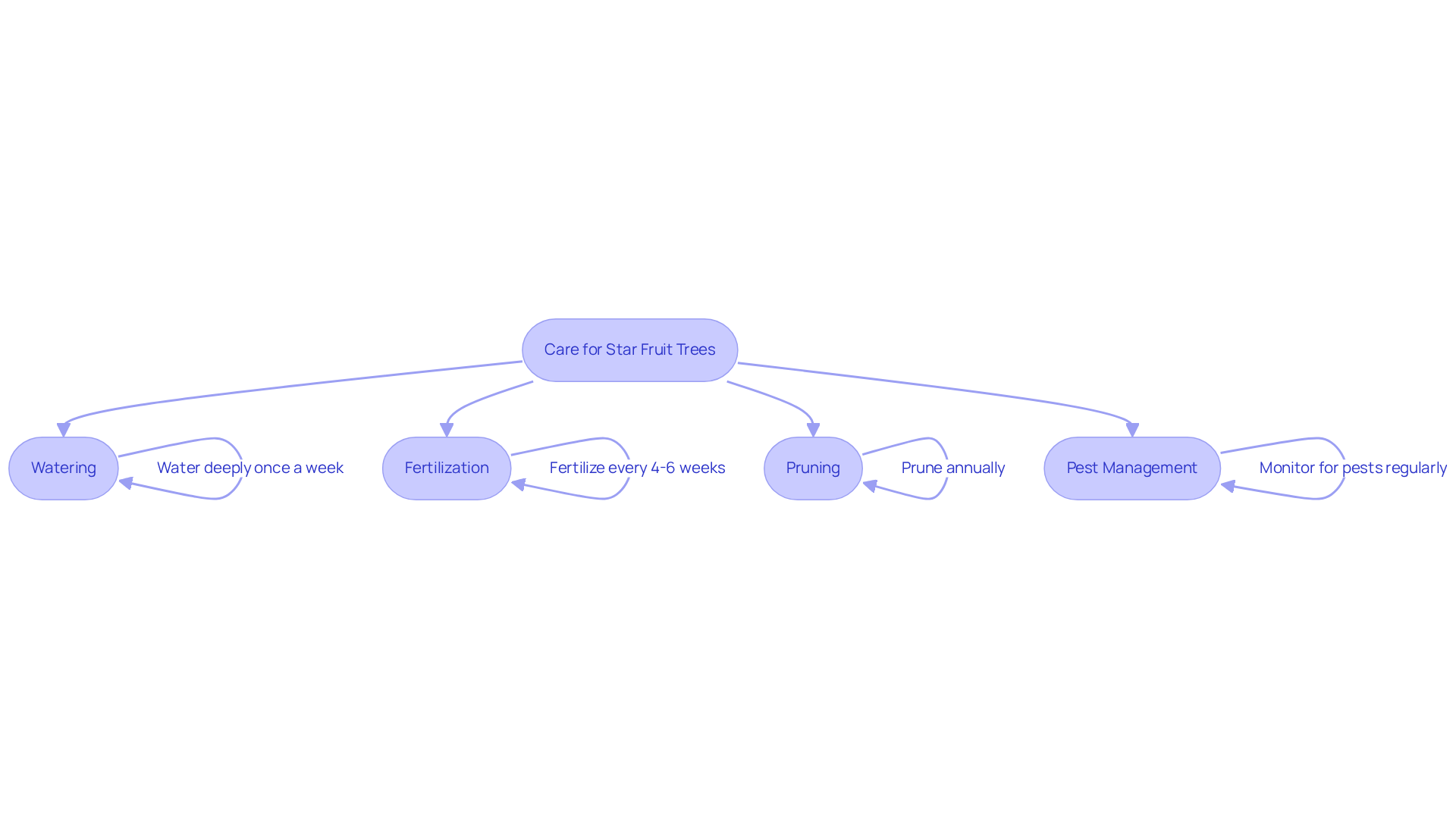
5. Troubleshoot Common Star Fruit Growing Issues
Common problems with star plants include yellowing leaves, inadequate yield, and pest infestations. Yellowing leaves may indicate nutrient deficiencies, particularly nitrogen or iron. To remedy this, applying a balanced fertilizer or a foliar spray of chelated iron can be beneficial. Additionally, if the plant is dropping flowers or fruit prematurely, it is essential to ensure it is receiving adequate water and nutrients, as moisture levels are crucial for maintaining its health. Jonathan H. Crane notes that excessively dry soil conditions can lead to symptoms such as leaf wilting and yellowing.
Pests like aphids and mealybugs can significantly impact the health of trees that produce star fruit. They can be controlled effectively with insecticidal soap or neem oil. Consistently examining your plant for indications of illness, such as leaf spots or wilting, is vital. If any affected leaves are found, removing them can hinder the spread of the problem. Research indicates that pest infestations can have a substantial impact on carambola cultivation, with studies showing that up to 30% of crops may be affected by common pests like aphids and mealybugs.
By implementing these interventions and maintaining vigilant care, gardeners can enhance the health and productivity of their trees that produce star fruit. Regular monitoring, proper nutrition, and timely pest control are essential practices that contribute to successful cultivation of star fruit.
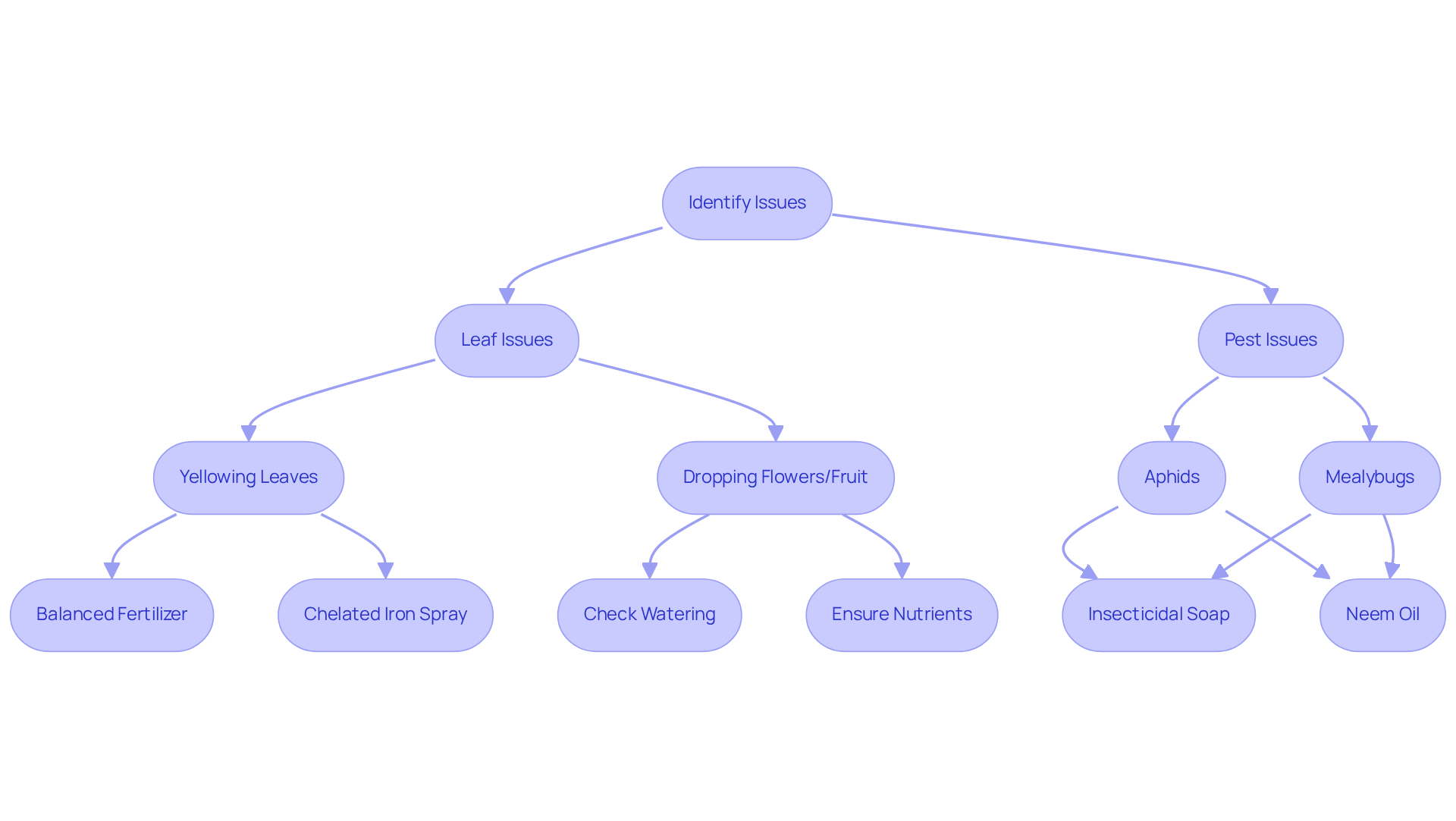
Conclusion
Successfully cultivating star fruit in your garden demands careful consideration of its specific needs, from selecting the appropriate climate to ensuring optimal soil conditions. By comprehending the unique requirements of star fruit trees, gardeners can establish an environment conducive to healthy growth and fruitful yields.
Key insights highlighted in this article underscore the significance of:
- Warm temperatures
- Abundant sunlight
- Well-draining soil with suitable pH levels
Furthermore, consistent care practices, including:
- Regular watering
- Fertilization
- Vigilant pest management
are essential for overcoming common challenges associated with star fruit cultivation. By adhering to these outlined steps, anyone can nurture thriving star fruit trees in their home garden.
In conclusion, the journey of growing star fruit is both rewarding and enriching. With the right knowledge and proactive care, gardeners can savor the sweet, unique taste of homegrown star fruit while contributing to a diverse and fruitful garden. Embrace these techniques and insights to ensure your star fruit trees flourish, and take pride in cultivating this tropical gem in your own backyard.
Cultivate Your Own Star Fruit Paradise Today!
Get premium star fruit trees delivered to your door and savor the taste of homegrown tropical delights.
🛒 Full Star Fruit Trees Collection
Frequently Asked Questions
What climate conditions are ideal for growing star fruit?
Star fruit plants thrive in warm, tropical to subtropical climates, specifically within USDA hardiness zones 10 to 11. They require full sun exposure, ideally with at least 8 hours of direct sunlight each day.
What temperature range is best for star fruit cultivation?
The ideal temperature range for growing star fruit is between 68°F and 95°F. Elevated humidity levels also enhance their growth.
How should star fruit plants be protected from frost?
Star fruit plants should be protected from frost, as temperatures below 60°F can hinder growth and negatively impact crop production.
What type of soil is best for planting star fruit?
The best soil for star fruit is well-draining, slightly acidic to neutral, with a pH between 5.5 and 6.5. Sandy loam or loamy soil enriched with organic matter is particularly suitable.
How should the soil be prepared before planting star fruit?
Before planting, amend the soil with compost or well-rotted manure to boost fertility and drainage, which are crucial for healthy growth.
What factors should be considered when selecting a planting site for star fruit?
Choose a planting site that receives full sunlight for at least 6-8 hours each day, is free from nearby vegetation or structures that may cast shade, and has proper air circulation to prevent fungal infections. Additionally, protect young plants from strong winds.
What are the requirements for container planting of star fruit?
For container planting, choose pots with drainage holes and fill them with a high-quality potting mix designed for tropical plants to ensure optimal conditions for root development and moisture retention.
Why is monitoring soil pH important for star fruit cultivation?
Regular monitoring of soil pH is critical because incorrect levels can lead to stunted growth, nutrient deficiencies, and insufficient production of star fruit.


